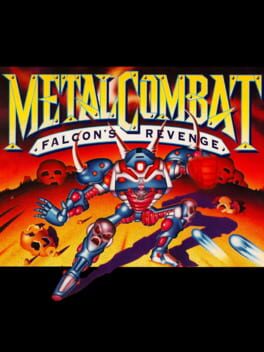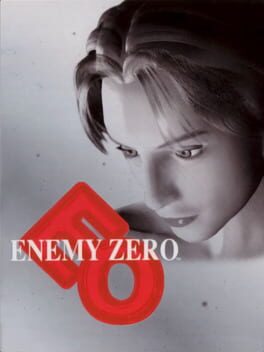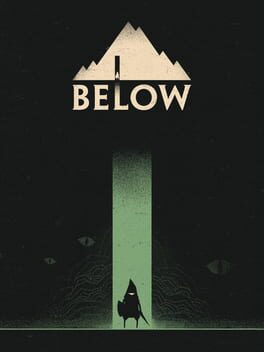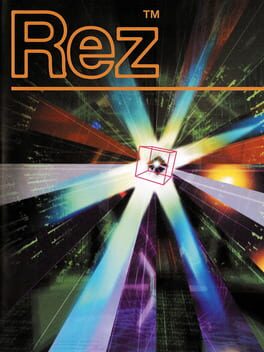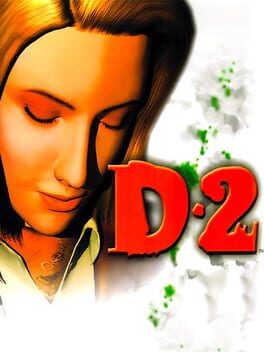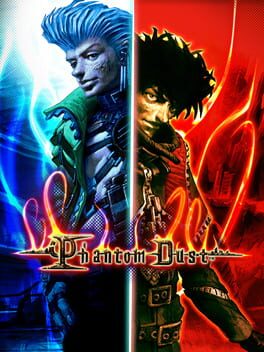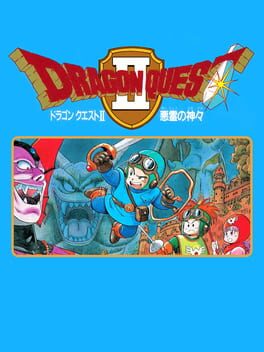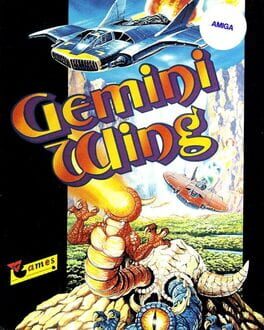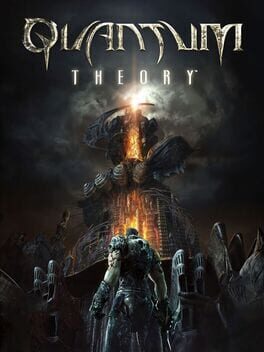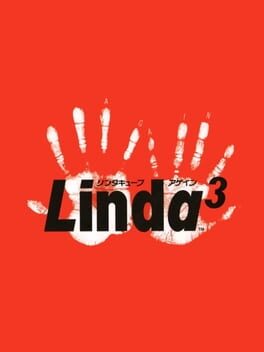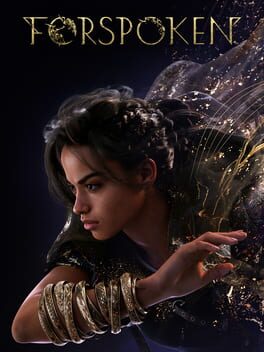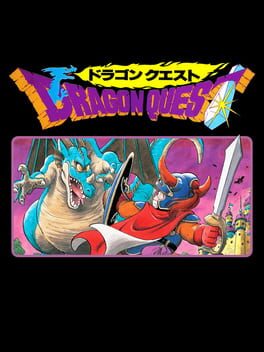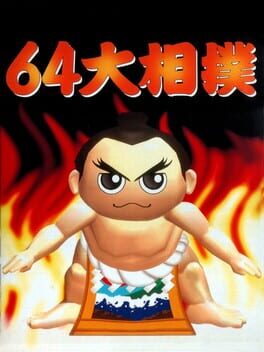mooptea
104 Reviews liked by mooptea
Here's what you do: the next time you go to your parent's house, grab the Wii that's sitting under the TV in the basement. A few simple steps later, you can have a console that emulates Super Nintendo games AND allows you to emulate the Super Scope using the Wii Remote motion control. THEN you play Metal Combat: Falcon's Revenge, the greatest home console light gun game ever made. It's just that simple.
Enemy Zero
1996
Genuine helplessness, noises in the dark, the knowledge that you could be at any time one second away from death from monsters you cannot see...
There are fewer games more compelling in their ability to make you feel terrified than "Enemy Zero." While it may not offer narrative surprises that make one stare in awe, the game already does that by creating an atmosphere of trodding through dark corridors on pins and needles. The lone piano chime as your only cue that something dangerous is nearby kicks the senses into overdrive, and with only a limited number of saves and loads allowed per file, you cannot abuse them. The intent is about pure sensation within the player, horror that derives from primal science-fiction.
There are fewer games more compelling in their ability to make you feel terrified than "Enemy Zero." While it may not offer narrative surprises that make one stare in awe, the game already does that by creating an atmosphere of trodding through dark corridors on pins and needles. The lone piano chime as your only cue that something dangerous is nearby kicks the senses into overdrive, and with only a limited number of saves and loads allowed per file, you cannot abuse them. The intent is about pure sensation within the player, horror that derives from primal science-fiction.
Below
2018
"Worries go down better with soup than without it." This is a Yiddish proverb. I am told, at least; my relationship with Jewish culture is a little messy. But I think of this saying often. Soup holds a kind of venerated position in Ashkenazi cuisine. Kreplach, matzo balls, mushroom barley, all that. It’s a staple. My dad, who provides my Jewish half, ironically, doesn’t enjoy soup much. He finds it boring. But the simplicity of a good soup is often it’s appeal. When we say “soup”, what do you think of? There are cold gazpachos and hot and sours, of course, but I think most of the time we think of hot, salty broth. The soup is clear but heavy, simple but filling. Soup is a potent food when it comes to meaning; it immediately conjures care, home, nourishment, warmth. Soup is hot, soothing, healing. Bad times with soup are better than bad times without soup.
In Below, knowing how to make a good soup is essential. After all, it is a game filled with worries. Soup will save your life. Each time you make it to a campfire, you get the chance make more soup, something that will carry you further into the depths. I won’t go as far as to say that the campfire feels like home. It, like your own little character’s life, is fleeting, and trapped in a dungeon. You constantly grow hungrier, thirstier, colder; you are creature of temperature and appetite, and you must abide by your bodily needs. That decay is a constant that defines Below. While you may know where the next campfire lies, you never know what lies between you and it. You have to be weary of each step and prepared for each sword swing. But for a moment, when you’re next to the fire, you can stop, breathe and nourish yourself. The campfire is an opportunity to replenish your supplies. To take a breather. To warm your bones. To make more soup.
There is a tragedy to Below's legacy. Generally, folks have seemed to be either underwhelmed and annoyed with it. It had been in development for over 5 years, announced during the bright and hot summer at E3 2013, and it was released in the cold winter nights of 2018. As it lead up to release, I got the creeping sensation that it was going to flop. And I think I was right. In an interview with Newsweek, Kris Piotrowski (Creative Director at Capybara Games) said “It's very important for there to be some people who make something very specific. And maybe you're not going to like this. But somebody else will fucking love it.” I think it is pretty clear that it will be divisive from it’s first moments: the first thing you see in the game is a long, slow zoom on a single little ship in the ocean, for several minutes. For me, I adored every moment of this crawl, but I think others will immediately shut the game off.
I’ll call it an unsung masterpiece for a specific reason: there are underrated masterpieces out there that I love a lot, but Below doesn’t even really have a ride-or-die fanbase. It released to tepid praise and hasn’t had a second wind. Part of the issue is that Below lacks a lot of character. That’s not to say it is not impressive. It is visually stunning to look at: the tilt shifted camera, the muted tones, the geometric geography and architecture. And the sound design is some of the best I’ve encountered in I think maybe any game. No, the issue isn’t a lack of presentation, but a lack of flair. There are so few discernable qualities. There aren’t any memorable characters, no flashy boss battles, no unique settings. Even mechanically, there is little that stands out about Below. I can give you the high level pitch, of course: it’s a procedural death labyrinth with survival elements. But will that pitch actually sell anyone on the game? I doubt it.
Which is a shame, because despite that lack of character, Below is expertly crafted and pretty beautiful.
If I had to use one word to describe Below, it would be “dread”. Every single surface of this game is covered in dread. Each sound, each inch of dirt is both beautiful and eerie in the same breath. Below’s environment is incredibly dark, often necessitating the use of a torch or the lantern. The game is set to a distance from your player character that dwarfs them; there’s this tilt-shift effect that makes everything seem minuscule. I found myself hunching over (more than usual) to squint at the darkness surrounding me. Shadows cast against the floor, the glowing eyes of beasts, prey in your periphery. The soundtrack by Jim Guthrie often sounds less like music and more like the groans of the earth itself. And if it’s not an ominous hum, it’s a somber, thoughtful ambiance, the wind brushing through the grass and the waves crashing on the shore. Sounds echo through the caves, scrapes of stones and trickles of water, the chitters and growls of something hunting you. You crawl into dark, terrible and ancient sepulchers, lined with death and sorrow. The distant scrapes and dark corridors become a canvas on which to paint your deepest fears.
Every time you die, you hear this sound. It’s a strange, sinister bellow, a deathly horn. And when you respawn, a new wanderer drifting onto that same rainy shore? That same haunting bellow sounds. As if to say, “This will happen again.”
Below is a difficult game. At times to a fault; there are a few death traps in there that are genuinely cruel. You’ll die a lot, and it’s a big part of the experience. You play not as a single adventurer, but dozens of them. Each death is final, and you play as a successor to the poor doomed soul who met their end in the caverns below. Below is an incredibly slow kind of difficulty. Combat is a deliberate, punishing affair. Sprinting through a room will often lead to a swift death. Your inventory space, too, is incredibly limited. You have sixteen slots for food and sixteen for materials. Personally, I am an inventory hoarder. I will maximize the use of every pound I can carry. But Below, in its limitations, has liberated me from this curse by forcing me to get rid of anything I truly don’t need. Any slot with an unneeded stick or stone is taking up space that could be taken by arrows or bandages. Be careful what you pack. Often you may die because you didn’t have enough materials on hand. Many deaths are deaths by attrition. Many players, I imagine, are going to feel these deaths are overly punishing. I certainly did, at times. But I also recognized that it was core to what the game was doing. It is an easy mistake, I think, to assume Below would be better if it wasn’t a Roguelite. There are lots of games like that nowadays, where the proc-gen structure seems more to be a mechanic on a dart board rather than a deliberate choice. But Below, really, can only be a Roguelite. Because structurally, it isn’t about beating the game. Having to delve even deeper with each death just to make progress can be intimidating. You’ll often lose a lot of materials, too. You can find your body with its wares still on it, now only a dry skeleton. How long has it been? Months? Years? I couldn’t say. But only take what you need.
At its most tense, Below’s dungeon crawling is either a desperate sprint or desperate struggle. On certain floors, you’ll sprint like your life depends on it, because it quite literally does. At the same time, you’ll have to be careful to dodge attacks or not to trigger any traps. So these marathons begin to ebb and flow from trepidation to a frantic sprint. At other times, Below puts you up against the wall. You feel surrounded, outmatched, overwhelmed. I wanted to flail in retaliation like a wild animal had leaped up against me, please, God, anything to get this thing away from me. But you have to be patient. Put up your shield. Wait to parry. Dodge their attacks. At these times, you need to be careful and patient, but also keep moving. Your hunger and thirst aren’t going to slow down. No matter which of these modes you end up playing in at a given time, Below’s most suspenseful moments are at the middle of a tug of war between a need to rush and a need to be as careful as possible. There is a specific area in the game (Floor 14 onwards, for those who know the game) that is genuinely one of the most dreadful levels in any game I’ve ever played; every single time I step foot in that place, my heart starts pounding, a frantic and desperate crawl through the darkness, pulled between the tension of needing to go slowly but needing to go faster. It’s dreadful. But I persevere. I make it through. Eventually.
Success in Below is not overcoming a mountain. It is about going deep down. There is no dragon in Below. No corrupt king, no great sea serpent, no devils or demons. There is nothing here for you to conquer. There are maybe one or two things I would call “boss battles”, but the biggest obstacles in Below are impossible to even scathe. Below is not a game about accomplishment. It’s a game about mastery. The game teaches you almost nothing about how to play; most mechanics have to be discovered by the players. And if you make it far enough, you begin to realize the goal is not descent, but the collection of these items called shards you discover with your lantern. And suddenly, it clicks into place. Succeeding in Below does not come from a single fell swoop, but a series of knicks. It comes from a series of successive runs. You stand on the shoulders of a thousand dead wanderers who you will join soon enough. By the later hours of Below, your player character(s) will not become any stronger. But you have learned so much. You know where to find the materials to make bombs, or how to make bandages, or how to get to the deepest pits of the island in only a few minutes. You begin to realize that you actually don’t lose much with each death. Sure, you might lose a hefty sum of crystals, or a stockpile of arrows and bandages, or a piece of gear you were saving, but there are ample ways to farm materials, and you can always find that gear again. Your goal is not to descend deeper, but to collect these shards with your lantern. And acquiring those shards is far less about slaughtering and spelunking, and more about knowing and understanding the cave systems of this island. You gain mastery, gain an understanding, of the world of Below. You find comfort in the little rituals you develop, of going and gathering picking supplies and hunting for materials, of making soup. It is a game about, despite all the insurmountable dread, finding a way forward anyway.
Again, there’s little I can say that will sell you on Below. There’s no big twist or hook to pull you in. It is just a nearly-perfectly designed game. Like a good soup, Below doesn’t look like much on the outside. But it’s a product of profound craftsmanship. It’s a stew of mechanics which compliment eachother precisely, a perfectly balanced mixture. And maybe once you’ve taken a spoonful, you’ll find that you think it’s a little boring. But give it time, pay close attention to it, understand it’s balance, and you might find that it grows on you, and you can recognize it as a rich and masterfully made experience.
In Below, knowing how to make a good soup is essential. After all, it is a game filled with worries. Soup will save your life. Each time you make it to a campfire, you get the chance make more soup, something that will carry you further into the depths. I won’t go as far as to say that the campfire feels like home. It, like your own little character’s life, is fleeting, and trapped in a dungeon. You constantly grow hungrier, thirstier, colder; you are creature of temperature and appetite, and you must abide by your bodily needs. That decay is a constant that defines Below. While you may know where the next campfire lies, you never know what lies between you and it. You have to be weary of each step and prepared for each sword swing. But for a moment, when you’re next to the fire, you can stop, breathe and nourish yourself. The campfire is an opportunity to replenish your supplies. To take a breather. To warm your bones. To make more soup.
There is a tragedy to Below's legacy. Generally, folks have seemed to be either underwhelmed and annoyed with it. It had been in development for over 5 years, announced during the bright and hot summer at E3 2013, and it was released in the cold winter nights of 2018. As it lead up to release, I got the creeping sensation that it was going to flop. And I think I was right. In an interview with Newsweek, Kris Piotrowski (Creative Director at Capybara Games) said “It's very important for there to be some people who make something very specific. And maybe you're not going to like this. But somebody else will fucking love it.” I think it is pretty clear that it will be divisive from it’s first moments: the first thing you see in the game is a long, slow zoom on a single little ship in the ocean, for several minutes. For me, I adored every moment of this crawl, but I think others will immediately shut the game off.
I’ll call it an unsung masterpiece for a specific reason: there are underrated masterpieces out there that I love a lot, but Below doesn’t even really have a ride-or-die fanbase. It released to tepid praise and hasn’t had a second wind. Part of the issue is that Below lacks a lot of character. That’s not to say it is not impressive. It is visually stunning to look at: the tilt shifted camera, the muted tones, the geometric geography and architecture. And the sound design is some of the best I’ve encountered in I think maybe any game. No, the issue isn’t a lack of presentation, but a lack of flair. There are so few discernable qualities. There aren’t any memorable characters, no flashy boss battles, no unique settings. Even mechanically, there is little that stands out about Below. I can give you the high level pitch, of course: it’s a procedural death labyrinth with survival elements. But will that pitch actually sell anyone on the game? I doubt it.
Which is a shame, because despite that lack of character, Below is expertly crafted and pretty beautiful.
If I had to use one word to describe Below, it would be “dread”. Every single surface of this game is covered in dread. Each sound, each inch of dirt is both beautiful and eerie in the same breath. Below’s environment is incredibly dark, often necessitating the use of a torch or the lantern. The game is set to a distance from your player character that dwarfs them; there’s this tilt-shift effect that makes everything seem minuscule. I found myself hunching over (more than usual) to squint at the darkness surrounding me. Shadows cast against the floor, the glowing eyes of beasts, prey in your periphery. The soundtrack by Jim Guthrie often sounds less like music and more like the groans of the earth itself. And if it’s not an ominous hum, it’s a somber, thoughtful ambiance, the wind brushing through the grass and the waves crashing on the shore. Sounds echo through the caves, scrapes of stones and trickles of water, the chitters and growls of something hunting you. You crawl into dark, terrible and ancient sepulchers, lined with death and sorrow. The distant scrapes and dark corridors become a canvas on which to paint your deepest fears.
Every time you die, you hear this sound. It’s a strange, sinister bellow, a deathly horn. And when you respawn, a new wanderer drifting onto that same rainy shore? That same haunting bellow sounds. As if to say, “This will happen again.”
Below is a difficult game. At times to a fault; there are a few death traps in there that are genuinely cruel. You’ll die a lot, and it’s a big part of the experience. You play not as a single adventurer, but dozens of them. Each death is final, and you play as a successor to the poor doomed soul who met their end in the caverns below. Below is an incredibly slow kind of difficulty. Combat is a deliberate, punishing affair. Sprinting through a room will often lead to a swift death. Your inventory space, too, is incredibly limited. You have sixteen slots for food and sixteen for materials. Personally, I am an inventory hoarder. I will maximize the use of every pound I can carry. But Below, in its limitations, has liberated me from this curse by forcing me to get rid of anything I truly don’t need. Any slot with an unneeded stick or stone is taking up space that could be taken by arrows or bandages. Be careful what you pack. Often you may die because you didn’t have enough materials on hand. Many deaths are deaths by attrition. Many players, I imagine, are going to feel these deaths are overly punishing. I certainly did, at times. But I also recognized that it was core to what the game was doing. It is an easy mistake, I think, to assume Below would be better if it wasn’t a Roguelite. There are lots of games like that nowadays, where the proc-gen structure seems more to be a mechanic on a dart board rather than a deliberate choice. But Below, really, can only be a Roguelite. Because structurally, it isn’t about beating the game. Having to delve even deeper with each death just to make progress can be intimidating. You’ll often lose a lot of materials, too. You can find your body with its wares still on it, now only a dry skeleton. How long has it been? Months? Years? I couldn’t say. But only take what you need.
At its most tense, Below’s dungeon crawling is either a desperate sprint or desperate struggle. On certain floors, you’ll sprint like your life depends on it, because it quite literally does. At the same time, you’ll have to be careful to dodge attacks or not to trigger any traps. So these marathons begin to ebb and flow from trepidation to a frantic sprint. At other times, Below puts you up against the wall. You feel surrounded, outmatched, overwhelmed. I wanted to flail in retaliation like a wild animal had leaped up against me, please, God, anything to get this thing away from me. But you have to be patient. Put up your shield. Wait to parry. Dodge their attacks. At these times, you need to be careful and patient, but also keep moving. Your hunger and thirst aren’t going to slow down. No matter which of these modes you end up playing in at a given time, Below’s most suspenseful moments are at the middle of a tug of war between a need to rush and a need to be as careful as possible. There is a specific area in the game (Floor 14 onwards, for those who know the game) that is genuinely one of the most dreadful levels in any game I’ve ever played; every single time I step foot in that place, my heart starts pounding, a frantic and desperate crawl through the darkness, pulled between the tension of needing to go slowly but needing to go faster. It’s dreadful. But I persevere. I make it through. Eventually.
Success in Below is not overcoming a mountain. It is about going deep down. There is no dragon in Below. No corrupt king, no great sea serpent, no devils or demons. There is nothing here for you to conquer. There are maybe one or two things I would call “boss battles”, but the biggest obstacles in Below are impossible to even scathe. Below is not a game about accomplishment. It’s a game about mastery. The game teaches you almost nothing about how to play; most mechanics have to be discovered by the players. And if you make it far enough, you begin to realize the goal is not descent, but the collection of these items called shards you discover with your lantern. And suddenly, it clicks into place. Succeeding in Below does not come from a single fell swoop, but a series of knicks. It comes from a series of successive runs. You stand on the shoulders of a thousand dead wanderers who you will join soon enough. By the later hours of Below, your player character(s) will not become any stronger. But you have learned so much. You know where to find the materials to make bombs, or how to make bandages, or how to get to the deepest pits of the island in only a few minutes. You begin to realize that you actually don’t lose much with each death. Sure, you might lose a hefty sum of crystals, or a stockpile of arrows and bandages, or a piece of gear you were saving, but there are ample ways to farm materials, and you can always find that gear again. Your goal is not to descend deeper, but to collect these shards with your lantern. And acquiring those shards is far less about slaughtering and spelunking, and more about knowing and understanding the cave systems of this island. You gain mastery, gain an understanding, of the world of Below. You find comfort in the little rituals you develop, of going and gathering picking supplies and hunting for materials, of making soup. It is a game about, despite all the insurmountable dread, finding a way forward anyway.
Again, there’s little I can say that will sell you on Below. There’s no big twist or hook to pull you in. It is just a nearly-perfectly designed game. Like a good soup, Below doesn’t look like much on the outside. But it’s a product of profound craftsmanship. It’s a stew of mechanics which compliment eachother precisely, a perfectly balanced mixture. And maybe once you’ve taken a spoonful, you’ll find that you think it’s a little boring. But give it time, pay close attention to it, understand it’s balance, and you might find that it grows on you, and you can recognize it as a rich and masterfully made experience.
Rez
2001
"It is only shallow people who do not judge by appearances..." - Oscar Wilde
Rez is, in a word, cool. It's very cool. It looks cool. It sounds cool. Its music is cool. It's a playable screensaver; this is a compliment. Sit back. Relax. Vibe. Let this masterfully crafted psychedelic cyberpunk demo-disc wash over you. It is a beautiful game, but beauty is skin deep. A criticism that will likely be lobbed in the direction of Rez is that its gameplay lacks depth. And this is true. Mechanically, it's a bit shallow. And I would be lying if I said I didn't want a bit more going on in the gameplay department. Maybe some kind of rhythm component.
But to say that Rez is "pretty but shallow" is wrong. Rez does not lack depth in spite of its aesthetics; its aesthetics are its depth. It is visually and sonically a delight in every way. That's not shallowness. That's what beauty is.
Rez is, in a word, cool. It's very cool. It looks cool. It sounds cool. Its music is cool. It's a playable screensaver; this is a compliment. Sit back. Relax. Vibe. Let this masterfully crafted psychedelic cyberpunk demo-disc wash over you. It is a beautiful game, but beauty is skin deep. A criticism that will likely be lobbed in the direction of Rez is that its gameplay lacks depth. And this is true. Mechanically, it's a bit shallow. And I would be lying if I said I didn't want a bit more going on in the gameplay department. Maybe some kind of rhythm component.
But to say that Rez is "pretty but shallow" is wrong. Rez does not lack depth in spite of its aesthetics; its aesthetics are its depth. It is visually and sonically a delight in every way. That's not shallowness. That's what beauty is.
D2
1999
Strong contender for the best game ever made. It's crafted with so much love and care that it's easy to overlook its many flaws, and its central message just propels it to an impossible level of achievement. Why this isn't as celebrated as some other, similarly off-kilter and narratively rich games I don't know.
My one major gripe with this game is the voice dubbing. It actually sucks. Like the dubbing is really, really bad. Except for Laura's english voice actor, she does a fine job (granted, she has like, two lines in the game).
The gameplay really works with me. The gameplay is a combination of on-rails shooting, jrpg random encounters, third-person exploration, hunting simulation, point and click adventure segments, puzzle solving, and resource management. This all sounds like a lot, but it's honestly pretty easy to get the hang of.
Of course, the main draw of the game is the story. It's a strange, slow paced, high stakes horror that takes inspiration from the works of Lovecraft, John Carpenter (mainly The Thing), and David Lynch. And it ends with one of the most hopeful, yet sobering endings I have ever seen. Overall, I highly recommend this, but it may take some time to adjust to the game's slow pace.
Happy New Year 2000.
My one major gripe with this game is the voice dubbing. It actually sucks. Like the dubbing is really, really bad. Except for Laura's english voice actor, she does a fine job (granted, she has like, two lines in the game).
The gameplay really works with me. The gameplay is a combination of on-rails shooting, jrpg random encounters, third-person exploration, hunting simulation, point and click adventure segments, puzzle solving, and resource management. This all sounds like a lot, but it's honestly pretty easy to get the hang of.
Of course, the main draw of the game is the story. It's a strange, slow paced, high stakes horror that takes inspiration from the works of Lovecraft, John Carpenter (mainly The Thing), and David Lynch. And it ends with one of the most hopeful, yet sobering endings I have ever seen. Overall, I highly recommend this, but it may take some time to adjust to the game's slow pace.
Happy New Year 2000.
Phantom Dust
2017
Me 2 months ago as I reread the entirety of Hunter x Hunter: “wow it’s strange that no one has actually made Greed Island into a full 3D video game”
This video game that has multiplayer that’s more fun than anything any anime arena fighter within the past 20 years could ever dream of being:
Personally the only negatives are the repetitive single player campaign that awkward is a mesh of a tutorial for the multiplayer and a legitimate effort to have something and idk 20 years of technological advancement with 3D and collectible-based video game software that seems obvious to us now because we are here looking back but also this game is still fun TODAY it is still good (and it was so good the people who made this game played it for fun on their damn break) and that says a lot
Even 20 years later and learning about the current meta it feels like the structure of this game’s balancing with the systems in place are so strong that there’s still enjoyment. When making your own “deck” you use in the game there are so many tradeoffs and small things when you get onto the field, obviously a sequel would be phenomenal and like I said some things in hindsight can be added and make life easier but it’s astounding how a game that existed before far more money-magnet-aligned not-fighting-or-shooting competitive online games existed can even remotely have a competitive scene at all with variety
Phantom Dust good, Phantom Dust free, you should try Phantom Dust
This video game that has multiplayer that’s more fun than anything any anime arena fighter within the past 20 years could ever dream of being:
Personally the only negatives are the repetitive single player campaign that awkward is a mesh of a tutorial for the multiplayer and a legitimate effort to have something and idk 20 years of technological advancement with 3D and collectible-based video game software that seems obvious to us now because we are here looking back but also this game is still fun TODAY it is still good (and it was so good the people who made this game played it for fun on their damn break) and that says a lot
Even 20 years later and learning about the current meta it feels like the structure of this game’s balancing with the systems in place are so strong that there’s still enjoyment. When making your own “deck” you use in the game there are so many tradeoffs and small things when you get onto the field, obviously a sequel would be phenomenal and like I said some things in hindsight can be added and make life easier but it’s astounding how a game that existed before far more money-magnet-aligned not-fighting-or-shooting competitive online games existed can even remotely have a competitive scene at all with variety
Phantom Dust good, Phantom Dust free, you should try Phantom Dust
Dragon Quest II
1993
(snes version)
A lot of what Dragon Quest is known for both mechanically and tonally was set up here--it's lighter than the original, with a greater emphasis on ~adventure~ and imaginative locations and fun little episodes, as well as more complex battles--and there were lots of moments where I could see the vision and was tricked (for a few minutes at least) into thinking it might be a masterpiece. Discovering the land from the first game, the bunny girl colosseum, the prince getting sick...was soul-breakingly mean but also charming, the haunting metaphysics of the final dungeon...so many places and moments that will stick with me.
Unfortunately this thing just ain't tuned quite right! It's a real blockbuster style sequel to the deeply contained, considered original, casting its net wide and catching less. It's too big for its own good, too bloated, and the near spiritually perfect number crunching of the first is now kind of a mess. Worst of all, in-between those great moments is...not much, emotionally. It's like 80% tonally empty, melancholic weight replaced with the dull reality of adventuring the world.
More water, more mountains, more slimes, and less to show for it all.
A lot of what Dragon Quest is known for both mechanically and tonally was set up here--it's lighter than the original, with a greater emphasis on ~adventure~ and imaginative locations and fun little episodes, as well as more complex battles--and there were lots of moments where I could see the vision and was tricked (for a few minutes at least) into thinking it might be a masterpiece. Discovering the land from the first game, the bunny girl colosseum, the prince getting sick...was soul-breakingly mean but also charming, the haunting metaphysics of the final dungeon...so many places and moments that will stick with me.
Unfortunately this thing just ain't tuned quite right! It's a real blockbuster style sequel to the deeply contained, considered original, casting its net wide and catching less. It's too big for its own good, too bloated, and the near spiritually perfect number crunching of the first is now kind of a mess. Worst of all, in-between those great moments is...not much, emotionally. It's like 80% tonally empty, melancholic weight replaced with the dull reality of adventuring the world.
More water, more mountains, more slimes, and less to show for it all.
Gemini Wing
1987
It is hard to believe that this innovative and beautifully realized shooting gem came out in 1987. Gemini Wing, like many other shooting games from its era, focuses more on the simpler and more immediately accessible aspects of shooting. While I'm more of a danmaku guy, Gemini Wing has been a great reminder that these games don't need insane bullet patterns, nor scoring mechanics that makes me learn ridiculous strategies, to grab hold of me. Old-School shooters can be unique, fun and memorable in their own ways, and Gemini Wing is hands down the most overlooked/underrated shooter I know about from the 80s.
First of all, if there's one drawback to the danmaku genre, it's that the less abstract audiovisual feedback tends to take a backseat. Take for example Mushihimesama and Futari, while there's surely effort put into making some pretty backgrounds to help realize the game world, it's all drowned out by a sea of bullets anyway. Basically, danmaku games come with a price. Before danmaku was really a thing, devs were forced to put more attention into making the game look and feel appealing to a wider audience, through a detailed and expressive game world. Gemini Wing shines in this regard, it's truly a vibrant, colorful game with a lot of variety in the stages. I'm not really sure how to express what the progression feels like in this game, but the feeling, the emotion is all there. It really feels like an adventure. The soundtrack is also very good. I wouldn't call the atmosphere awe-inspiring, but it makes an impression.
Where a lot shooters from this era lose me, is the the pure fun factor and longevity. I love danmaku because I enjoy pushing my skills to their limits, forging elaborate strategies, dodging complex bullet sprays... Old school shooters tend to not give you all that much to do in the long run, there's some dodging and shooting in the stage, maybe a barely functional scoring system, and bosses that repeats one or two patterns. I'd rather spend my time on a game with a high skill ceiling. Gemini Wing, despite being from 1987, has scoring that isn't completely broken or boring, so in my book, it's a game that is worth playing for a long time, rather than just clear and move on. Thankfully it avoids the trap of loops unlike so many other shooters. Gemini Wing is also a vertical shooter with stage hazards which is somewhat unusual, but well done in this case. Only some of the stages have any hazards (stuff like walls or moving objects) but they never really feel like much of a chore, in fact, I think the final stage in particular is very well designed. It doesn't rely on hazards as much as, say, Image Fight.
Anyway, lets start from the top with the mechanics. Gemini Wing lets you use a peashooter, which is hardly very impressive, and which you cannot upgrade. In this sense, you need to pick out your targets with accuracy. On the other hand, the main ability is unique. There are specific foes in Gemini Wing that carry so-called "gunballs", which are basically single-use attacks (or point-bonuses/extends/speed-ups). There are several different gunballs, some more effective than others. These specific foes "hold" them, so they will have a trail of gunballs behind them. You can shoot these enemies to change the type of gunball they carry, probably inspired by the bell system from Twinbee. You can then choose to either steal the gunballs by picking up the trail (this could get tricky to pull off) or kill the enemy in which case the gunballs will scatter across the screen so you can grab them. When you grab a gunball, it trails behind you just like it did with your enemies, so then you simply use the gunballs in order.
The effectiveness of gunballs vary greatly, but the idea is that you must use them. There are gunballs that are only mildly effective, like the green rockets, or the purple wave. What you really want is the screen clearing beam or blue circle thingie... there's also a sword-like swinging fire thing that can be very strong in some places. The gunballs are blatantly imbalanced, but since you can put in the extra effort of trying to collect the specific gunballs you want, I think that is actually in the game's favor. Fighting with both peashooter and gunballs creates a fun dynamic gameplay where you're trying to defeat all that you can and stay alive, without running out of gunballs, since that may well spell doom for you.
Moving on from gunballs, the idea behind scoring is not immediately obvious. More was found out about the inner workings in Gemini Wing during a Shmups Forum tournament in 2014. Of course, Japan must've been aware of this since the 80s, but there's very much a divide between east and west in the shooting game scene, so strategies for obscure games like this are often completely undocumented and thus unknown to anyone that wasn't part of the eastern arcade scene. There's more to it but to put it briefy, there's a "queue" for the enemies which actually spans the entire game. Think of it like a caravan shooter (those 2-5 minute mode games) where you kill enemies quickly to spawn even more enemies. Gemini Wing works sort of like that except it spans the whole game, so a newcomer would spawn enemies in stage 2, that a score player will spawn in stage 1. This puts a lot of pressure to constantly get the best gunballs and kill everything efficiently.
Enemies also come in a wide variety which is yet another reason why this game is so fun. The way the enemies behave is more about how their movement works rather than how they shoot their bullets, and the game pretty much never gives you a pause. Foes are plentiful and will just keep on swarming the screen, which is very satisfying given the game system.
I enjoy Gemini Wing a ton, but bosses are a little lacking. This is normal for the old-school style, the bosses are more there to make an "impression" than to provide a really challenging and fun fight. The final boss, however, is not just lacking, but it is one of the worst bosses in any shooting game, and the reason why I was a little hesitant to give Gemini Wing such a high rating. The final boss will never time out, covers almost the entire screen, and you have to wait for it to spawn random eggs to kill, with random gunballs in them. You cannot damage the boss with your peashooter without actually moving behind it (more on that later) and most gunballs are completely ineffective. The boss follows a very, very slow and tedious movement pattern that means you're given sparse opportunities to do any damage in any way. At first, I used a "safe" strategy, but I remember failing to take out the boss in as long as 15 minutes the first time I reached it in an early 1cc attempt. The only effective way to take this boss out that I know of is to do a kamikaze attack during a specific point in the pattern, where you go into its weak point (tip of its tail) which actually doesn't have a hitbox, and is the only place where you can shoot it with the peashooter. Then autofire pointblank. It'll die pretty quickly from this, but there's a high risk that you'll die first, since the eggs spawn here at random times. There are gunballs you can use to speed up the process and slightly reduce the luck aspect, but you get a bigger clear bonus the more gunballs you carry! If you're serious about this game and you die here, then kiss a high score goodbye because both lives and gunballs in stock are precious for the clear bonus. If you die, you will have to painstakingly wait and collect gunballs for minutes on end until you can attempt the kill again, unless you don't care about score, in which case you could just stock up a few specifically effective gunballs. The patterns while waiting aren't terribly hard, but not trivial either, so there's some pressure there.
Despite the awful boss fight at the end, Gemini Wing is a truly remarkable game that deserves more attention. If you have any interest at all in STG then go play this in MAME.
First of all, if there's one drawback to the danmaku genre, it's that the less abstract audiovisual feedback tends to take a backseat. Take for example Mushihimesama and Futari, while there's surely effort put into making some pretty backgrounds to help realize the game world, it's all drowned out by a sea of bullets anyway. Basically, danmaku games come with a price. Before danmaku was really a thing, devs were forced to put more attention into making the game look and feel appealing to a wider audience, through a detailed and expressive game world. Gemini Wing shines in this regard, it's truly a vibrant, colorful game with a lot of variety in the stages. I'm not really sure how to express what the progression feels like in this game, but the feeling, the emotion is all there. It really feels like an adventure. The soundtrack is also very good. I wouldn't call the atmosphere awe-inspiring, but it makes an impression.
Where a lot shooters from this era lose me, is the the pure fun factor and longevity. I love danmaku because I enjoy pushing my skills to their limits, forging elaborate strategies, dodging complex bullet sprays... Old school shooters tend to not give you all that much to do in the long run, there's some dodging and shooting in the stage, maybe a barely functional scoring system, and bosses that repeats one or two patterns. I'd rather spend my time on a game with a high skill ceiling. Gemini Wing, despite being from 1987, has scoring that isn't completely broken or boring, so in my book, it's a game that is worth playing for a long time, rather than just clear and move on. Thankfully it avoids the trap of loops unlike so many other shooters. Gemini Wing is also a vertical shooter with stage hazards which is somewhat unusual, but well done in this case. Only some of the stages have any hazards (stuff like walls or moving objects) but they never really feel like much of a chore, in fact, I think the final stage in particular is very well designed. It doesn't rely on hazards as much as, say, Image Fight.
Anyway, lets start from the top with the mechanics. Gemini Wing lets you use a peashooter, which is hardly very impressive, and which you cannot upgrade. In this sense, you need to pick out your targets with accuracy. On the other hand, the main ability is unique. There are specific foes in Gemini Wing that carry so-called "gunballs", which are basically single-use attacks (or point-bonuses/extends/speed-ups). There are several different gunballs, some more effective than others. These specific foes "hold" them, so they will have a trail of gunballs behind them. You can shoot these enemies to change the type of gunball they carry, probably inspired by the bell system from Twinbee. You can then choose to either steal the gunballs by picking up the trail (this could get tricky to pull off) or kill the enemy in which case the gunballs will scatter across the screen so you can grab them. When you grab a gunball, it trails behind you just like it did with your enemies, so then you simply use the gunballs in order.
The effectiveness of gunballs vary greatly, but the idea is that you must use them. There are gunballs that are only mildly effective, like the green rockets, or the purple wave. What you really want is the screen clearing beam or blue circle thingie... there's also a sword-like swinging fire thing that can be very strong in some places. The gunballs are blatantly imbalanced, but since you can put in the extra effort of trying to collect the specific gunballs you want, I think that is actually in the game's favor. Fighting with both peashooter and gunballs creates a fun dynamic gameplay where you're trying to defeat all that you can and stay alive, without running out of gunballs, since that may well spell doom for you.
Moving on from gunballs, the idea behind scoring is not immediately obvious. More was found out about the inner workings in Gemini Wing during a Shmups Forum tournament in 2014. Of course, Japan must've been aware of this since the 80s, but there's very much a divide between east and west in the shooting game scene, so strategies for obscure games like this are often completely undocumented and thus unknown to anyone that wasn't part of the eastern arcade scene. There's more to it but to put it briefy, there's a "queue" for the enemies which actually spans the entire game. Think of it like a caravan shooter (those 2-5 minute mode games) where you kill enemies quickly to spawn even more enemies. Gemini Wing works sort of like that except it spans the whole game, so a newcomer would spawn enemies in stage 2, that a score player will spawn in stage 1. This puts a lot of pressure to constantly get the best gunballs and kill everything efficiently.
Enemies also come in a wide variety which is yet another reason why this game is so fun. The way the enemies behave is more about how their movement works rather than how they shoot their bullets, and the game pretty much never gives you a pause. Foes are plentiful and will just keep on swarming the screen, which is very satisfying given the game system.
I enjoy Gemini Wing a ton, but bosses are a little lacking. This is normal for the old-school style, the bosses are more there to make an "impression" than to provide a really challenging and fun fight. The final boss, however, is not just lacking, but it is one of the worst bosses in any shooting game, and the reason why I was a little hesitant to give Gemini Wing such a high rating. The final boss will never time out, covers almost the entire screen, and you have to wait for it to spawn random eggs to kill, with random gunballs in them. You cannot damage the boss with your peashooter without actually moving behind it (more on that later) and most gunballs are completely ineffective. The boss follows a very, very slow and tedious movement pattern that means you're given sparse opportunities to do any damage in any way. At first, I used a "safe" strategy, but I remember failing to take out the boss in as long as 15 minutes the first time I reached it in an early 1cc attempt. The only effective way to take this boss out that I know of is to do a kamikaze attack during a specific point in the pattern, where you go into its weak point (tip of its tail) which actually doesn't have a hitbox, and is the only place where you can shoot it with the peashooter. Then autofire pointblank. It'll die pretty quickly from this, but there's a high risk that you'll die first, since the eggs spawn here at random times. There are gunballs you can use to speed up the process and slightly reduce the luck aspect, but you get a bigger clear bonus the more gunballs you carry! If you're serious about this game and you die here, then kiss a high score goodbye because both lives and gunballs in stock are precious for the clear bonus. If you die, you will have to painstakingly wait and collect gunballs for minutes on end until you can attempt the kill again, unless you don't care about score, in which case you could just stock up a few specifically effective gunballs. The patterns while waiting aren't terribly hard, but not trivial either, so there's some pressure there.
Despite the awful boss fight at the end, Gemini Wing is a truly remarkable game that deserves more attention. If you have any interest at all in STG then go play this in MAME.
Quantum Theory
2010
Ironic that a game who’s plot is about breaking your programming and going against what would be expected of you ends up with a reputation that takes what it presents at face value and twists what it actually is so it could fit the mold of what people expect 7th gen games to be, and this game faces no critical re-evaluation to this day, simply look at that disgrace of a description, in-fact there’s only one other person who appreciates it for what it is and he is the one who recommended this to me in the first place, it seems everyone else is still stuck up on taking the first 45 minutes of this game as gospel for representing everything else it has, failing to recognize that the game acknowledges the doubts a person could have about sci-fi military shooters of that gen because it begins with a section that can’t be anything other than a parody to GoW. Shed away all of that and you have a fantastic shooter underneath with a heartfelt sci-fi story, the variety of weapons on display here are nice and fit whatever playstyle you’d want to go for, there’s also the fact that you can combo with your partner to unleash some devastating attacks, it all flows into one, fluid gameplay system.
TL;DR, it’s not a fucking GoW clone or a cover shooter.
TL;DR, it’s not a fucking GoW clone or a cover shooter.
Linda Cube Again
1997
The definitive Noah's Ark game. To think this was originally released a year after Super 3-D Noah's Ark, and three years after Noah's Ark for the NES.
But enough joking, this translation patch was a long time coming after ivantod's fan translation, and I'm truly thankful to be able to experience this game in a way that's not just gazing at the illustrations by Cannabis (Tatsuyuki Tanaka).
There's three scenarios – and an extra Scenario D that's a time trial mode. Scenario A and B are essentially tutorials that serve to familiarise you with the story and characters, and let you explore ⅔ of the planet. The true game begins in Scenario C.
The first thing you want to do is get a free dog, buy a second dog and off you go. You have more than enough time to rescue all the cute, weird and ugly animals before the Grim Reaper comes. Everything else you can ask the NPCs. They will explain some of the many esoteric game mechanics, and others have dialogue that reinforces the game's primal theme of life (sex) and death (the meteor). I appreciate the raunchy humour. It's very human. The whole game is. Makes me want to know more about the PC Engine version, and how much it differs from the remake besides the audio-visuals.
Linda, of course, is the main attraction. I like Linda. Though I must say I prefer her pink hair to turquoise. I also like that you help her through her mental and physical impediment in Scenarios A and B respectively. She's more of a main character than Ken, who has the personality of a punching bag. He makes more in-depth comments about furniture than 90% of the story, despite being a voiced protagonist. Too wishy-washy for my liking.
Ken and Linda's relationship – at first glance – can be summarised by the concept art where Linda yells, "SUFFER BABY!!" to a Ken locked in her Cobra Twist, screaming, "MORE POWER! MORE FREEDOM! THEY'RE GOIN' WILD BABY!! HELP!!!" But their camping scenes are much more intimate, and the pay-off at the end is fantastic.
Linda³ Linda³ Linda³ Again is absolutely worth playing, even if you find yourself lost in this heavenly zoo.
But enough joking, this translation patch was a long time coming after ivantod's fan translation, and I'm truly thankful to be able to experience this game in a way that's not just gazing at the illustrations by Cannabis (Tatsuyuki Tanaka).
There's three scenarios – and an extra Scenario D that's a time trial mode. Scenario A and B are essentially tutorials that serve to familiarise you with the story and characters, and let you explore ⅔ of the planet. The true game begins in Scenario C.
The first thing you want to do is get a free dog, buy a second dog and off you go. You have more than enough time to rescue all the cute, weird and ugly animals before the Grim Reaper comes. Everything else you can ask the NPCs. They will explain some of the many esoteric game mechanics, and others have dialogue that reinforces the game's primal theme of life (sex) and death (the meteor). I appreciate the raunchy humour. It's very human. The whole game is. Makes me want to know more about the PC Engine version, and how much it differs from the remake besides the audio-visuals.
Linda, of course, is the main attraction. I like Linda. Though I must say I prefer her pink hair to turquoise. I also like that you help her through her mental and physical impediment in Scenarios A and B respectively. She's more of a main character than Ken, who has the personality of a punching bag. He makes more in-depth comments about furniture than 90% of the story, despite being a voiced protagonist. Too wishy-washy for my liking.
Ken and Linda's relationship – at first glance – can be summarised by the concept art where Linda yells, "SUFFER BABY!!" to a Ken locked in her Cobra Twist, screaming, "MORE POWER! MORE FREEDOM! THEY'RE GOIN' WILD BABY!! HELP!!!" But their camping scenes are much more intimate, and the pay-off at the end is fantastic.
Linda³ Linda³ Linda³ Again is absolutely worth playing, even if you find yourself lost in this heavenly zoo.
Phantom Dust
2004
I see a lot of reviews going back and forth over the "card game" mechanics of this game and yeah it's...a little hard to exactly specify what it is since it's partially a deck building card game, but put into a free-roaming action game. A big appeal of it is that it offers risk/reward and ways to use said deck of skills for your benefit or your opponent's detriment. On top of this man of the skills have different situational uses as well and can be used purely for support even if needed. The strategy in the deck-building is definitely unique and engaging, but it also requires the player to be smart about their traversal in the environment and have a back up in case a primary strat goes haywire.
I went through about 15 deck revisions playing this and I adored just trying to figure out what would work best against the next set of enemies.
But other than that, this game is gorgeous, has a horribly depressing story to tell in a horribly depressing world, set to music that is just...hauntingly gorgeous and surreal. A one of a kind game that I don't think we'll ever see again.
I went through about 15 deck revisions playing this and I adored just trying to figure out what would work best against the next set of enemies.
But other than that, this game is gorgeous, has a horribly depressing story to tell in a horribly depressing world, set to music that is just...hauntingly gorgeous and surreal. A one of a kind game that I don't think we'll ever see again.
Phantom Dust
2004
Nothing like it anywhere else, unique and very fun "action card game" that was never replicated for some reason. Only arrived at the shores of the west through sheer love from the dev team. Great biopunk story, cool and stylish designs, beautiful use of normal mapping for it's great lightning effects. Can find no negatives besides never getting a sequel or at least other games trying to imitate it. It's also FREE ON PC RIGHT NOW
Forspoken
2023
above everything, Forspoken hit me with what it does between the main narrative. while exploring the world of Athia as Frey, you can connect to her journey more directly than what the outsorced main narrative affords. she was stuck in a practically inescapable homelessness situation in New York where she was shunned by almost everyone around her. in there, she could only use her athleticism to run away.
Frey had no connections other than her pet cat to sustain her will.
she then goes through her standard fare isekai initiation and ends up in Athia, learning powers that allow her to both fight back and extend her already impressive physical abilities to extraordinary lengths. by this point the parallels between the two worlds become really clear. is it basically the purest definition of escapism? maybe, but i'd say that much is lost by putting Forspoken inside a box.
Frey's journey in Athia is akin to one of struggling witch learning to accept herself. she's still socially shunned by the higher classes, but she doesn't have to depend on them like she did in New York (there isn't even a fixed currency system!). she gets her own pointy witch houses where she can craft potions, enchant robes and necklaces and take care of her (up to) 13 supernatural cats, each spiritually connected to Athia's mythology. Frey is frequently called a heretic for it.
ultimately, she needs to kill the four demigoddesses that used to rule Athia before losing their minds. she's initially disgusted even by their legacy, but nonetheless has to absorb their powers when she kills each of them. each time the player helps her do this, her abilities grow larger and more varied. they all help Frey explore and thus understand the world better, consequently growing fonder of the four women and spiritually becoming her own amalgam of ancestry and experiences. she isn't defined by them, but she learns to accept them. i don't really wanna spoil anything, so i'll keep from talking about the later stuff that expands upon this aspect.
you can choose to spend as much time jumping around the now almost-natural landscapes of Athia as you want. each open world chapter only asks Frey to go toward the dominion of a specific demigoddess and kill them. this objective is always located pretty far away, and there are these completely optional, game-length areas in here that you can explore while travelling. to appropriately explore Athia, you have to connect with the different demigoddesses by using their abilities; mainly Frey's mysterious first set of magic.
Forspoken is a journey defined by the moments you spend together with its vast land. the game allows you to do this without the need to directly cross over with the main narrative, which i didn't touch because i don't find it that interesting to discuss.
Athia is a rich, nature-heavy (due to the quasi-apocalypse it suffered) land with as many heigths as mundane locations that make it feel tangible, especially when you take a moment to absorb the space it shares with you. it only asks you to accept the connection.
\\
this review is a little wild, but it reflects my pretty weird experience with the game so i'll let it be.
Frey had no connections other than her pet cat to sustain her will.
she then goes through her standard fare isekai initiation and ends up in Athia, learning powers that allow her to both fight back and extend her already impressive physical abilities to extraordinary lengths. by this point the parallels between the two worlds become really clear. is it basically the purest definition of escapism? maybe, but i'd say that much is lost by putting Forspoken inside a box.
Frey's journey in Athia is akin to one of struggling witch learning to accept herself. she's still socially shunned by the higher classes, but she doesn't have to depend on them like she did in New York (there isn't even a fixed currency system!). she gets her own pointy witch houses where she can craft potions, enchant robes and necklaces and take care of her (up to) 13 supernatural cats, each spiritually connected to Athia's mythology. Frey is frequently called a heretic for it.
ultimately, she needs to kill the four demigoddesses that used to rule Athia before losing their minds. she's initially disgusted even by their legacy, but nonetheless has to absorb their powers when she kills each of them. each time the player helps her do this, her abilities grow larger and more varied. they all help Frey explore and thus understand the world better, consequently growing fonder of the four women and spiritually becoming her own amalgam of ancestry and experiences. she isn't defined by them, but she learns to accept them. i don't really wanna spoil anything, so i'll keep from talking about the later stuff that expands upon this aspect.
you can choose to spend as much time jumping around the now almost-natural landscapes of Athia as you want. each open world chapter only asks Frey to go toward the dominion of a specific demigoddess and kill them. this objective is always located pretty far away, and there are these completely optional, game-length areas in here that you can explore while travelling. to appropriately explore Athia, you have to connect with the different demigoddesses by using their abilities; mainly Frey's mysterious first set of magic.
Forspoken is a journey defined by the moments you spend together with its vast land. the game allows you to do this without the need to directly cross over with the main narrative, which i didn't touch because i don't find it that interesting to discuss.
Athia is a rich, nature-heavy (due to the quasi-apocalypse it suffered) land with as many heigths as mundane locations that make it feel tangible, especially when you take a moment to absorb the space it shares with you. it only asks you to accept the connection.
\\
this review is a little wild, but it reflects my pretty weird experience with the game so i'll let it be.
Dragon Quest
1993
(snes version)
All but perfectly composed. The way the world folds out from your central location (the place you save), the magnificent numbers tuning where a 5 is the most beautiful thing you've ever seen, the hum of combat stripped to its essentials and the light open-world design that encourages interacting with its residents...Dragon Quest basically one-and-done'd it all. About the only thing I have any desire to ding it for is that magic is largely useless outside of healing and traversal, half your arsenal profoundly unnecessary in a game otherwise so tightly formed.
But honestly who cares when faced with Dragon Quest's greatest strength: its tone. Despite the image DQ has accrued of being lovely and charming and nostalgic and warm, this game is a profoundly sad experience. The world is dead. Towns are in ruins. Poison litters the ground as naturally as water and there are more bloodthirsty, alien monsters than there are people anymore. And every person you talk to time and time again puts it all on you: you have to save us, you are the only one who can. There are no party members, it's a journey of solitude. No friends to make, no campfire stories or wacky hijinx to get into, just the one thing you were born to do. You have no choice; it's in your blood. You can't even die, fate and duty so strong that you are brought back again and again until you succeed. Every inch of this game is oozing a melancholic weight heavier than just about anything in gaming. It's no coincidence that Koichi Sugiyama's (god not rest his soul) overworld theme here, the song you are treated to the most, brings to mind the fog before a rain more than any idea of adventure.
Palpable stuff! Stuff that is astounding in its own right but which also builds to a transcendent release at the end, one of the great narrative moments in a game, when you finally accomplish your goal and the world explodes into flowers and all the monsters vanish and everyone celebrates and you, the hero, freed from the grip of responsibility and expectation, life now perfectly without purpose, wander off to new worlds. (something something about killing the dark fascist lord and then rejecting your noble monarchal position to live free from systems of power)
I repeat: all but perfectly composed.
All but perfectly composed. The way the world folds out from your central location (the place you save), the magnificent numbers tuning where a 5 is the most beautiful thing you've ever seen, the hum of combat stripped to its essentials and the light open-world design that encourages interacting with its residents...Dragon Quest basically one-and-done'd it all. About the only thing I have any desire to ding it for is that magic is largely useless outside of healing and traversal, half your arsenal profoundly unnecessary in a game otherwise so tightly formed.
But honestly who cares when faced with Dragon Quest's greatest strength: its tone. Despite the image DQ has accrued of being lovely and charming and nostalgic and warm, this game is a profoundly sad experience. The world is dead. Towns are in ruins. Poison litters the ground as naturally as water and there are more bloodthirsty, alien monsters than there are people anymore. And every person you talk to time and time again puts it all on you: you have to save us, you are the only one who can. There are no party members, it's a journey of solitude. No friends to make, no campfire stories or wacky hijinx to get into, just the one thing you were born to do. You have no choice; it's in your blood. You can't even die, fate and duty so strong that you are brought back again and again until you succeed. Every inch of this game is oozing a melancholic weight heavier than just about anything in gaming. It's no coincidence that Koichi Sugiyama's (god not rest his soul) overworld theme here, the song you are treated to the most, brings to mind the fog before a rain more than any idea of adventure.
Palpable stuff! Stuff that is astounding in its own right but which also builds to a transcendent release at the end, one of the great narrative moments in a game, when you finally accomplish your goal and the world explodes into flowers and all the monsters vanish and everyone celebrates and you, the hero, freed from the grip of responsibility and expectation, life now perfectly without purpose, wander off to new worlds. (something something about killing the dark fascist lord and then rejecting your noble monarchal position to live free from systems of power)
I repeat: all but perfectly composed.
64 Oozumou
1997
N64 Magazine gave this Japanese-only sumo wrestling a rather impressive 90%. Even so, I was surprised as to how much I actually enjoyed this. Unfortunately, there is no fan patch for this game but thankfully Google Lens did a pretty good job at translating the dialogue – it was a bit odd in places, but I got the general gist of it.
And, surprisingly, there really is a lot of dialogue, as this has a fully fledged story mode – not just pitting you against other fighters like every other fighting game, but a proper story about you joining the professional Sumo wrestling and your life outside of the ring. You’ll encounter good or bad events based on how you perform in the matches.
Each match is extremely short but very fast paced. The game suggests optimal moves, but you can also do your own thing. To be completely honest, I wasn’t entirely sure what I was doing most of the time and there was a lot of button mashing, but I did deduce that there was a rhythm to the fighting, and performing moves in time to your opponent’s bar flashing is what triggers your finishing moves. The matches are only on average 30 seconds but extremely frantic and they are surprisingly a lot of fun.
As you defeat higher ranked opponents, you’ll gain stars which let you achieve a higher rank, with your goal being to be the best Sumo wrestler. After each tournament, you can also play a minigame.
There are five minigames: sleeping, eating, training, jumping and fishing. The first four are short, enjoyable distractions while I couldn’t figure out the fishing at all. They’re a nice, relaxing change of pace for a quick breather before the next tournament. Sleeping has you rolling around a little island collecting stars, eating has a judge calling out food you need to grab before your opponent, training is a “simon says” and jumping has you moon jumping high in the air, bouncing off trampolines and clouds as you pop balloons.
Between some individual matches and tournaments, you’ll progress in the story. To begin with, it seems like a bunch of random events as your character interacts with a few different girls (eventually going on dates with all of them), rivals and a few other characters. I am not sure how much your performance in the game affects the outcome, but one girl (Akira) eventually suggests marriage – which was surprising as my main character had stood her up on two dates. On one, he overslept, on another, he forgot and had a date with someone else.
The only direct choice was choosing your response to the marriage, although I suspect that saying you want to concentrate on your Sumo for now has the same end result, as if you say yes, Akira suggests waiting until you’re at the top anyway. However, the encounters and dialogue are charming on their own.
As you approach the high ranks, the story becomes more plot focused as you get attacked and then discover a “Dark Sumo” illegal gambling ring. You shut it down (you still have no input on this, it’s just dialogue) and the leader vows revenge – which he does on his wedding day as he kidnaps your wife.
The ending is both utterly absurd and wonderfully charming at the same time as you have your final fight with this villain and his “ultimate body”.
Sumo 64 is a combination of really enjoyable short fighting mixed with charming dialogue (which would probably be even better if it got a proper translation). If you understand Japanese or are willing to point your phone at your TV a lot, this is a surprisingly great game.
And, surprisingly, there really is a lot of dialogue, as this has a fully fledged story mode – not just pitting you against other fighters like every other fighting game, but a proper story about you joining the professional Sumo wrestling and your life outside of the ring. You’ll encounter good or bad events based on how you perform in the matches.
Each match is extremely short but very fast paced. The game suggests optimal moves, but you can also do your own thing. To be completely honest, I wasn’t entirely sure what I was doing most of the time and there was a lot of button mashing, but I did deduce that there was a rhythm to the fighting, and performing moves in time to your opponent’s bar flashing is what triggers your finishing moves. The matches are only on average 30 seconds but extremely frantic and they are surprisingly a lot of fun.
As you defeat higher ranked opponents, you’ll gain stars which let you achieve a higher rank, with your goal being to be the best Sumo wrestler. After each tournament, you can also play a minigame.
There are five minigames: sleeping, eating, training, jumping and fishing. The first four are short, enjoyable distractions while I couldn’t figure out the fishing at all. They’re a nice, relaxing change of pace for a quick breather before the next tournament. Sleeping has you rolling around a little island collecting stars, eating has a judge calling out food you need to grab before your opponent, training is a “simon says” and jumping has you moon jumping high in the air, bouncing off trampolines and clouds as you pop balloons.
Between some individual matches and tournaments, you’ll progress in the story. To begin with, it seems like a bunch of random events as your character interacts with a few different girls (eventually going on dates with all of them), rivals and a few other characters. I am not sure how much your performance in the game affects the outcome, but one girl (Akira) eventually suggests marriage – which was surprising as my main character had stood her up on two dates. On one, he overslept, on another, he forgot and had a date with someone else.
The only direct choice was choosing your response to the marriage, although I suspect that saying you want to concentrate on your Sumo for now has the same end result, as if you say yes, Akira suggests waiting until you’re at the top anyway. However, the encounters and dialogue are charming on their own.
As you approach the high ranks, the story becomes more plot focused as you get attacked and then discover a “Dark Sumo” illegal gambling ring. You shut it down (you still have no input on this, it’s just dialogue) and the leader vows revenge – which he does on his wedding day as he kidnaps your wife.
The ending is both utterly absurd and wonderfully charming at the same time as you have your final fight with this villain and his “ultimate body”.
Sumo 64 is a combination of really enjoyable short fighting mixed with charming dialogue (which would probably be even better if it got a proper translation). If you understand Japanese or are willing to point your phone at your TV a lot, this is a surprisingly great game.
